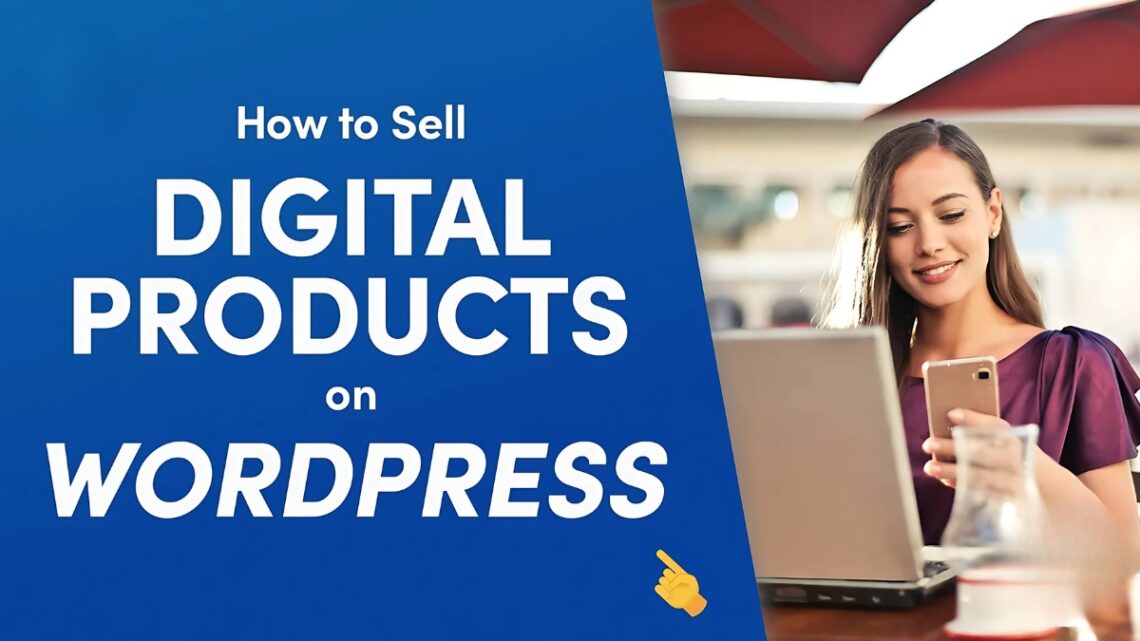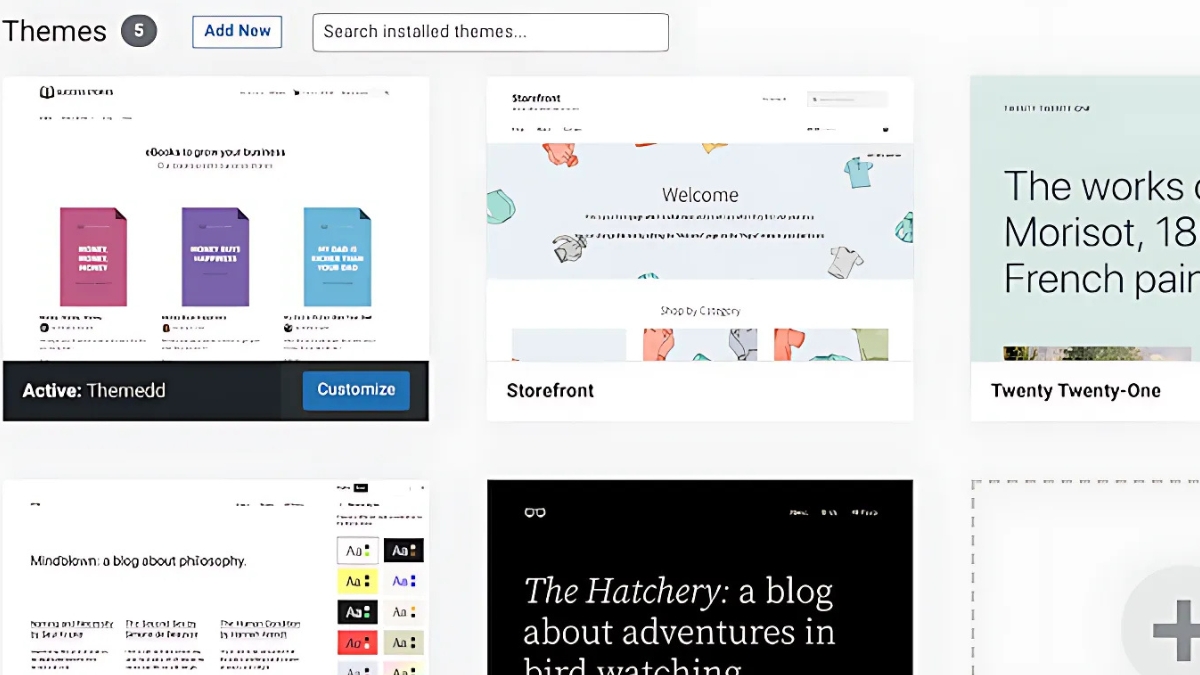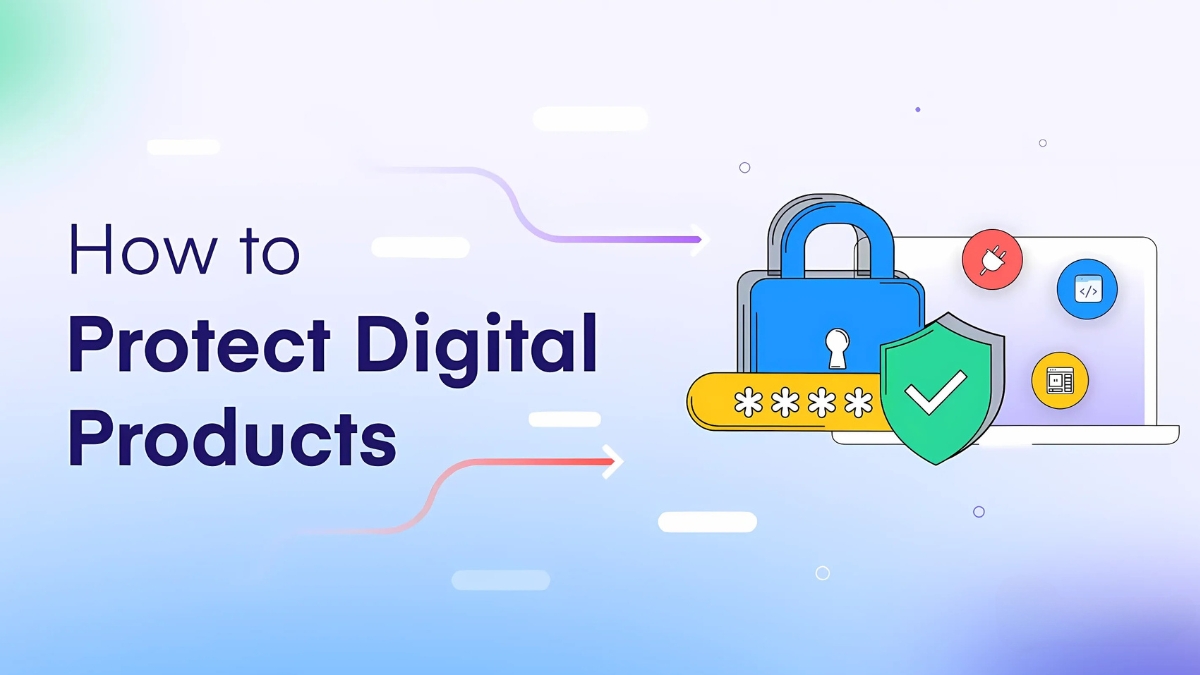
How to Sell Digital Downloads on WordPress in 2025: Complete Guide for Beginners
Did you know that the global digital product market is projected to reach $331.3 billion by 2027? Whether you’re creating ebooks, music, software, or digital art, WordPress offers a powerful platform to sell your digital downloads. As someone who’s helped hundreds of creators monetize their digital products, I’ll guide you through everything you need to know to start selling digital downloads on WordPress. From choosing the right plugins to protecting your digital assets, this comprehensive guide will help you launch your digital product business with confidence!
Understanding Digital Downloads and WordPress Compatibility
First, let’s get clear on what we mean by “digital downloads.” These are any files that customers can purchase and download directly to their devices. I’ve helped clients sell everything from 10-page PDF cookbooks to massive software installations, and the list of possibilities is pretty incredible. The most common types I see are:
- Ebooks and PDFs (think cookbooks, guides, worksheets)
- Music and audio files (MP3s, WAV files)
- Software and apps
- Digital art and graphics
- Video courses
- Templates and themes
- Printables and planners
Here’s something that tripped me up early on – WordPress.com and WordPress.org are completely different beasts when it comes to selling digital downloads. WordPress.com (the hosted version) has some pretty strict limitations. Unless you’re on their Business or eCommerce plans ($25+ per month), you’re going to have a tough time selling digital products. Trust me, I learned this the hard way with a client who was on the Personal plan!
WordPress.org, on the other hand, is where the magic happens. Since it’s self-hosted, you have full control to sell digital downloads on WordPress however you want. You can install any plugin, customize everything, and really build out a proper digital product store. The trade-off? You need to handle hosting yourself.

Speaking of hosting – this is where things get technical, but stick with me. For selling digital downloads successfully, you’ll need:
- A reliable hosting provider with good bandwidth (I learned the hard way that cheap shared hosting crashes under heavy download traffic)
- Enough storage space for your files (most hosts give you at least 10GB)
- SSL certificate (crucial for secure payments – most hosts include this now)
- PHP memory limit of at least 256MB (trust me, you’ll need it for larger files)
Now, let’s talk about file sizes and delivery, because this can make or break your digital download business. Most hosting providers have upload limits between 50MB to 150MB per file. I once had a client trying to upload a 2GB video course directly to WordPress – yeah, that didn’t work out so well! For larger files, you’ll want to look into external storage solutions like Amazon S3 or DigitalOcean Spaces.
Delivery methods are another crucial piece of the puzzle. You can either serve files directly from your server (fine for small PDFs), or use a delivery service (better for larger files). Some of my favorite delivery methods include:
- Direct download links (good for files under 50MB)
- Chunked downloads (better for larger files)
- Cloud storage integration (best for huge files)
The key to successfully selling digital downloads on WordPress is matching your technical setup to your products. For instance, if you’re selling 5MB ebooks, your setup will be way different than someone selling 500MB video courses. I’ve seen too many people struggle with download timeouts and frustrated customers because they didn’t plan their infrastructure properly.
Essential Plugins and Tools for Selling Digital Downloads
The two biggest players in the digital download space are Easy Digital Downloads (EDD) and WooCommerce, and I’ve used both extensively. Here’s the real deal: EDD was built specifically for digital products, while WooCommerce is more of a Swiss Army knife that can handle digital downloads among other things.
Easy Digital Downloads is my go-to when clients are solely focusing on digital products. The free version lets you sell digital downloads on WordPress with basic features, but here’s where it gets interesting – the premium version (starting at $99.50/year) adds some serious functionality. I remember one client who started with the free version and quickly hit its limitations when they couldn’t offer product bundles or content dripping.
The premium features that are absolutely worth it include:
- Software licensing (perfect for developers)
- Content dripping (great for course creators)
- Multiple price options per product
- Advanced reporting
- Recurring payments
WooCommerce, on the other hand, is free and incredibly powerful, but there’s a catch. You’ll need to buy extensions for digital download-specific features. The basic plugin is great if you’re mixing physical and digital products, but for serious digital product sellers, you’re looking at investing in extensions like:
- Product Vendors ($79/year)
- PDF Watermarks ($49/year)
- Follow-Up Emails ($99/year)
Now, let’s talk about payment gateways – this is crucial because it’s literally how you get paid! Both plugins support PayPal and Stripe out of the box, but there are some key differences. I learned the hard way that PayPal’s instant access can be a lifesaver when Stripe’s verification process takes longer than expected. Most of my clients end up using both – PayPal captures those customers who prefer it, while Stripe handles direct credit card payments with lower fees (2.9% + $0.30 per transaction).

For larger files (I’m talking 500MB+), you absolutely need to think about file hosting. I once had a client’s entire site crash because they tried hosting a 2GB video course directly on their shared hosting! Here are the solutions I recommend:
Amazon S3: Best for scalability
- Costs about $0.023 per GB
- Incredibly reliable
- Works great with both EDD and WooCommerce
DigitalOcean Spaces: Budget-friendly alternative
- $5/month for 250GB
- Simple pricing structure
- Great for medium-sized catalogs
One thing that often surprises new sellers is the need for additional tools beyond just the main plugin. Here’s what I consider essential:
- A backup solution (UpdraftPlus is my go-to)
- Security plugin (Wordfence or Sucuri)
- Caching plugin (but configured correctly for ecommerce!)
The most important lesson I’ve learned is that it’s better to start with a solid foundation and upgrade as you grow. For most beginners looking to sell digital downloads on WordPress, I recommend starting with Easy Digital Downloads’ free version and upgrading to premium features as needed. The learning curve is gentler, and you won’t get overwhelmed with options you don’t need yet.
Setting Up Your Digital Download Store
First things first – installation. Let’s say we’re using Easy Digital Downloads (my preferred choice for purely digital products). Head to Plugins > Add New in your WordPress dashboard and search for it. Here’s where a lot of people mess up – after activating the plugin, you need to go through the setup wizard! It’s tempting to skip it, but trust me, it saves hours of headaches later.
During the setup wizard, you’ll need to:
- Set your store’s location
- Choose your currency
- Create essential pages (they’ll be auto-generated)
- Set up your payment gateway
Speaking of payment gateways, this is where things get interesting. I always recommend setting up both PayPal and Stripe. Here’s why: I once had a client lose several sales because their Stripe account was under review, but PayPal worked fine as a backup. To set up Stripe, you’ll need:
- Your publishable key
- Your secret key
- Webhook endpoint (don’t skip this – it’s crucial for proper order processing!)
Now comes the fun part – creating your product pages! To sell digital downloads on WordPress successfully, you need to nail this part. Here’s my tried-and-true process:
- Go to Downloads > Add New
- Create a compelling title
- Write a detailed description
- Set your pricing (don’t forget about variable pricing if needed!)
- Upload your digital file
Pro tip about uploading files: I learned the hard way to always use a consistent naming convention for your files. Something like “product-name-version-1.pdf” makes updating content so much easier later.
Tax configuration is probably the least exciting part, but it’s super important. You’ll need to:
- Enable tax calculation if required
- Set your tax rates based on location
- Configure tax reporting settings
I once skipped proper tax setup and had to manually calculate taxes for a whole month’s worth of sales. Not fun!

For download limits and access controls, here’s what I recommend:
- Set a download limit (I usually go with 3-5 attempts)
- Configure the expiration time (48 hours works well)
- Enable IP tracking
- Set up download logging
One mistake I made early on was setting the download limit too low. A customer’s spotty internet connection ate up all their download attempts, and they were pretty upset. Now I always build in some buffer.
Here’s a crucial step many people miss: testing the entire purchase and download process. Before launching, you absolutely need to:
- Create a test product (price it at $0.01)
- Go through the checkout process
- Test the download functionality
- Check your email notifications
- Verify the purchase shows up in your reports
The most important thing I’ve learned about setting up a digital download store is that it’s better to take your time during setup than to rush and fix problems later. I always tell my clients to plan for at least a full day of setup and testing before launching.
Remember to regularly back up your store settings once everything is configured. I use UpdraftPlus for this – it’s saved me more than once when updates went wrong. And speaking of updates, always test them on a staging site first. Nothing worse than breaking your download delivery system during a busy sales period!
Finally, don’t forget to set up your success and download pages with clear instructions for customers. A little extra guidance here can save you tons of support tickets later. I learned that lesson after spending way too much time explaining to customers how to access their downloads!
Protecting Your Digital Products
I learned this lesson the hard way when I found one of my client’s premium ebooks being shared on a download site just days after launch. Since then, I’ve developed a pretty solid protection strategy that I’m excited to share with you.
First, let’s talk about Digital Rights Management (DRM). While some creators go overboard with DRM, I’ve found that a balanced approach works best. Here’s what I recommend:
- PDF stamping with customer information
- Unique download links that expire
- License key verification for software
- Download attempt limitations
One thing that really changed the game for me was implementing dynamic watermarking. Every PDF that gets downloaded now automatically includes the customer’s name and email address on each page. It’s not foolproof, but I’ve noticed a significant decrease in unauthorized sharing since implementing this. The psychology behind it is simple – people are less likely to share something that has their personal information on it.
Speaking of download restrictions, here’s a setup that’s worked really well for my clients who sell digital downloads on WordPress:
- Limit download attempts to 5 times
- Set links to expire after 48 hours
- Require account creation for purchases
- Track IP addresses of downloads
- Block suspicious download patterns
I remember one instance where a customer’s download link was shared in a Facebook group. Thanks to our IP tracking, we caught it quickly and were able to deactivate the link before too much damage was done. Now I always tell clients – it’s better to be a little strict with access controls than to deal with widespread piracy later.
Here’s my comprehensive watermarking strategy:
- Add visible watermarks to preview content
- Include invisible watermarks in full products
- Embed user-specific metadata in files
- Use dynamic footer text with purchase information
- Apply corner watermarks with timestamps

For PDFs specifically, I use a combination of methods:
- Convert text to outlines to prevent easy copying
- Disable printing when possible
- Add security passwords for editing
- Include dynamic page numbers with customer info
- Use high-resolution watermarks that are hard to remove
One clever trick I’ve learned is to include “honeypot” content – unique, trackable pieces of content that help you identify where leaks might be coming from. It’s like adding a digital fingerprint to your products.
Security isn’t just about the files themselves. You also need to protect your delivery system. Here’s what I implement for every store:
- SSL encryption for all pages
- Strong password requirements
- Two-factor authentication for admin accounts
- Regular security scans
- Automated backup systems
The most effective protection strategy I’ve found is actually a combination of technical and psychological measures. By making it clear that you’re tracking downloads and including customer information in the products, most people will think twice before sharing.
Remember though, no protection method is perfect. The goal isn’t to make sharing impossible (because that’s not realistic), but to make it inconvenient enough that most people will choose to buy legitimately. I always tell my clients – focus on providing great value and making it easy for customers to buy properly, while implementing reasonable protection measures.
Don’t forget to include clear terms of use with every download. I’ve found that most customers actually want to do the right thing – they just need to know what that is. A simple, friendly reminder about usage rights can go a long way in preventing casual sharing.
Marketing and Selling Digital Downloads
Let me start with a mistake I made early on – I used to write product descriptions that were just… boring lists of features. Big mistake! Now I know that storytelling is everything. Here’s what I’ve learned about optimizing product pages:
- Write benefit-focused headlines (not just “Fitness Ebook” but “Transform Your Body in 30 Days”)
- Include social proof early (testimonials, download counts, success stories)
- Use bullet points for scannable features
- Add preview content (this was a game-changer for conversion rates!)
- Include high-quality screenshots or mockups
Speaking of SEO, here’s something interesting – Google actually treats digital product pages differently from physical product pages. I’ve found that to sell digital downloads on WordPress successfully, you need to focus heavily on problem-solving content. My most successful clients include:
- Detailed FAQs that address common concerns
- Video previews or tutorials
- Sample content or “try before you buy” sections
- Clear technical requirements
- Multiple use cases and examples
Email marketing has been absolutely crucial for digital products. Here’s the strategy that’s worked best for me:
- Offer a small free download to build your list
- Create a welcome sequence that educates about your paid products
- Send weekly valuable content (not just sales pitches!)
- Use automated abandoned cart emails
- Create special bundles for your email subscribers
I learned something fascinating about discount codes – they work best when they have a story behind them. Instead of just “SAVE20”, I help clients create themed promotions like:
- Early bird discounts (with genuine deadlines)
- Holiday-themed bundles
- Customer appreciation events
- Launch celebration offers
- Educational institution discounts
One of my favorite promotional strategies is the tiered pricing model. For example:
- Basic version: Core product
- Premium: Core product + additional resources
- Complete: Everything + coaching call
This approach has consistently increased average order values by giving customers options. I remember one client who doubled their revenue just by implementing this structure!

Here’s a promotional calendar that’s worked well:
- January: New Year’s goal-setting promotions
- April: Spring cleaning (digital organization products)
- July: Mid-year review specials
- September: Back-to-school offers
- November/December: Holiday bundles
Don’t forget about remarketing! I always set up:
- Facebook pixel tracking
- Google Analytics goals
- Email signup tracking
- Download tracking
- Cart abandonment monitoring
The biggest lesson I’ve learned about marketing digital products is that trust is everything. People are naturally skeptical about digital purchases, so you need to over-deliver on proof and previews. I always include:
- Money-back guarantees
- Clear delivery instructions
- Preview content
- Customer success stories
- Regular updates
One clever trick I discovered: create urgency through bonus offers rather than discounts. Instead of lowering the price, add time-limited bonuses. This preserves your product’s perceived value while still giving people a reason to buy now.
Remember: marketing digital products is about showing value before the purchase. Since customers can’t physically hold what they’re buying, you need to make the benefits crystal clear and the buying process absolutely trustworthy.
Managing Orders and Customer Support
I remember staying up until 3 AM one night helping a customer who couldn’t access their download because I hadn’t set up proper automated delivery systems. Here’s what I now implement for every store:
- Instant delivery confirmation emails
- Clear download instructions with screenshots
- Backup delivery methods
- Automated password generation
- Purchase history access
Customer support is where things get really interesting. I’ve found that to successfully sell digital downloads on WordPress, you need robust support systems. Here’s my tried-and-true setup:
- Help Desk Software Integration
- I use either HelpScout or Freshdesk
- Set up canned responses for common issues
- Create priority levels for different types of problems
- Enable ticket tracking and response time monitoring
- Technical Issue Resolution System:
- Download troubleshooting guide
- Browser compatibility checklist
- File access flowchart
- Connection speed requirements
- Device-specific instructions
One thing that really saved my sanity was creating a proper refund process. Here’s what I recommend:
- Clear refund policy (I suggest 30 days)
- Automated refund request form
- Follow-up survey to understand why
- Process for revoking access
- System for tracking refund rates
Documentation is absolutely crucial! I create three types:
- Pre-Purchase Documentation:
- System requirements
- Download instructions
- Usage guidelines
- Format specifications
- Post-Purchase Documentation:
- Getting started guides
- Troubleshooting tips
- Access instructions
- Update procedures
- Internal Documentation:
- Refund procedures
- Technical issue flowcharts
- Customer communication templates
- Problem escalation guidelines

I learned something interesting about FAQs – they need to be dynamic. I keep a running log of actual customer questions and update the FAQ monthly. The most common issues I’ve seen:
- Download link expired
- Can’t open file
- Lost access credentials
- Need different file format
- Payment issues
Here’s my process for handling technical issues:
- Automated troubleshooting guide
- Email support with specific solutions
- Screen sharing if needed (for complex issues)
- Follow-up to ensure resolution
- Document solution for future reference
One game-changing system I implemented was a “download insurance” policy. If something goes wrong with the download, customers can get instant access to a backup delivery method. This has dramatically reduced support tickets and increased customer satisfaction.
The most important lesson I’ve learned is to be proactive rather than reactive. Every Friday, I review:
- Failed downloads
- Support tickets trends
- Refund requests
- Customer feedback
- System performance
Remember to set up automated monitoring for:
- Download completion rates
- Server uptime
- Payment gateway status
- Email delivery success
- Support response times
Finally, don’t forget about customer education! I create short video tutorials for:
- Accessing downloads
- Opening different file types
- Saving files properly
- Getting updates
- Contacting support
The key to successful order management is automation with a human touch. Yes, automate everything you can, but make sure customers know there’s a real person ready to help when needed. This balance has helped me maintain a less than 2% refund rate across multiple stores.
Setting up a digital download store on WordPress doesn’t have to be complicated. By following this guide and choosing the right tools, you can create a professional digital product store that generates passive income. Remember to focus on providing value to your customers and protecting your digital assets. Ready to start selling? Choose your preferred plugin and take the first step toward launching your digital download business today!





